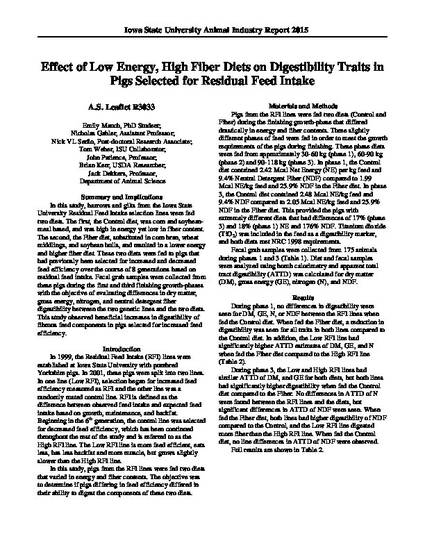
In this study, barrows and gilts from the Iowa State University Residual Feed Intake selection lines were fed two diets. The first, the Control diet, was corn and soybean-meal based, and was high in energy yet low in fiber content. The second, the Fiber diet, substituted in corn bran, wheat middlings, and soybean hulls, and resulted in a lower energy and higher fiber diet. These two diets were fed to pigs that had previously been selected for increased and decreased feed efficiency over the course of 8 generations based on residual feed intake. Fecal grab samples were collected from these pigs during the first and third finishing growth-phases with the objective of evaluating differences in dry matter, gross energy, nitrogen, and neutral detergent fiber digestibility between the two genetic lines and the two diets. This study observed beneficial increases in digestibility of fibrous feed components in pigs selected for increased feed efficiency.
Available at: http://works.bepress.com/john-patience/29/
